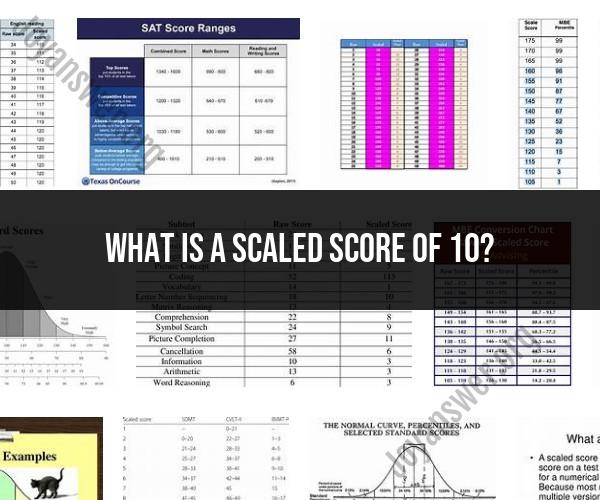What is a scaled score of 10?
Scaled scores are commonly used in educational and psychological assessments to standardize scores across different tests and measures. A scaled score of 10 typically indicates a specific level of performance, but the interpretation can vary depending on the context of the assessment. Here's how to evaluate and interpret scaled scores of 10:
1. Understand the Scale:Before interpreting a scaled score of 10, you need to understand the scoring scale used in the assessment. Different assessments use different scales, and the meaning of a scaled score can vary from one test to another.
2. Context of the Assessment:Consider the purpose of the assessment and the skills or traits being measured. Is the assessment measuring academic abilities, cognitive skills, behavioral traits, or something else? This context will guide your interpretation.
3. Norms and Reference Group:Assessments often compare an individual's performance to that of a reference or norm group. A scaled score of 10 might be above average, below average, or exactly average, depending on the characteristics of the reference group.
4. Percentile Rank:Some assessments provide percentile ranks alongside scaled scores. A scaled score of 10 might correspond to a specific percentile rank, indicating how the individual's performance compares to others who took the same test.
5. Proficiency Levels:In some educational assessments, scaled scores are mapped to proficiency levels. A scaled score of 10 might correspond to a certain level of proficiency, such as "basic," "proficient," or "advanced."
6. Interpretation Guidelines:Consult the assessment's scoring guidelines or interpretation manual for specific information about what a scaled score of 10 represents. The manual should provide detailed explanations of the score's meaning within the context of the assessment.
7. Consider Other Scores:In many cases, assessments provide multiple scores or subscores that contribute to an overall assessment of the individual. It's important to consider these additional scores to get a comprehensive picture of the individual's performance.
8. Consult Experts:If you're unsure about how to interpret a scaled score of 10 or need further clarification, consider consulting educational or psychological professionals who are familiar with the specific assessment.
9. Use as a Benchmark:A scaled score of 10 can be used as a benchmark for tracking progress over time. By comparing scores across multiple assessments, you can observe trends and improvements.
Remember that interpreting assessment scores requires careful consideration of multiple factors. Always rely on the guidance provided by the assessment's creators, and be cautious about making assumptions based solely on a single scaled score.













